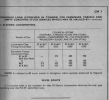Yep, as well as what others have said, I’m fairly sure there was a daytime Euston - Scotland Motorail at some point, possibly into the 90s.
1S01 11:18 Euston to Stirling, E595, TTHSO UNTIL 27 SEP in the 1986 timetable. Overtaken at Rugby (12*25 - 12*30) by 1F22 11:30 Euston-Liverpool Lime Street, SL at Milford & Brocton to Crewe 13:49 to 13:55, overtaken by 1S69 11:45 Euston-Glasgow (dep. Crewe 13:51).
1M69 11:30 Stirling to London Euston, E595, MWFO UNTIL 26 SEP, NOT 12 MAY, 15:58-16:00 Crewe then FL all the way to London Euston 18:15
(From my timetable showing all class 1 trains Euston-Crewe in 1986, I think extracted from a CA working timetable which was loaned to me at the time.)
EDIT - for those unfamiliar, E595 relates to the timing load, and from a similar working timetable it looks like there's no difference in the weight allowed for E595 (E600 in the extract here) regardless of type of electric locomotive, but for the more regular E455 timing (used at the time for the majority of express services) there's a limit of 9 coaches (315 tonnes) for class 81-85 versus 13 coaches for classes 86 & 87, plus no 86/0 for the faster trains allowed in theory. (This extract from the 1977 CM working timetable covering the South Manchester area.)


